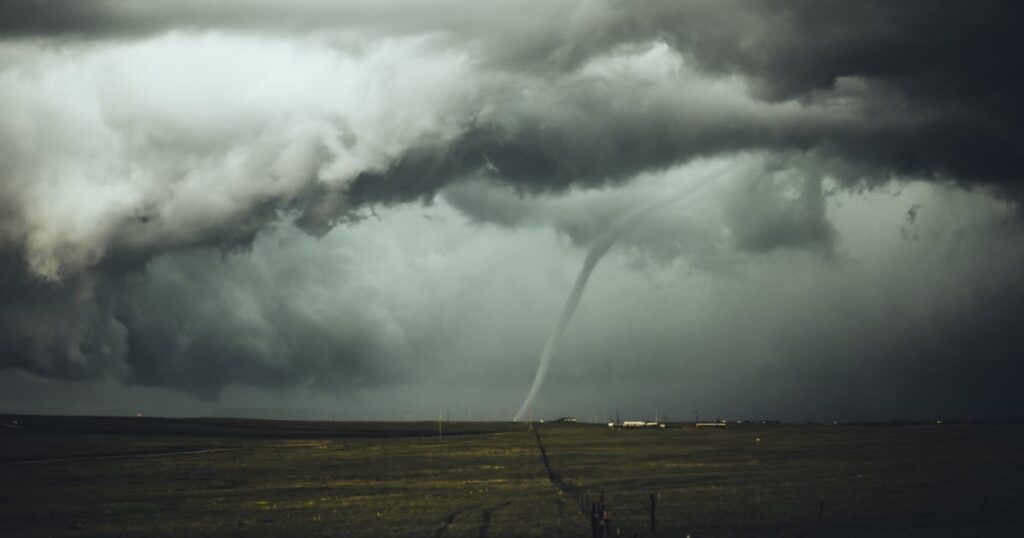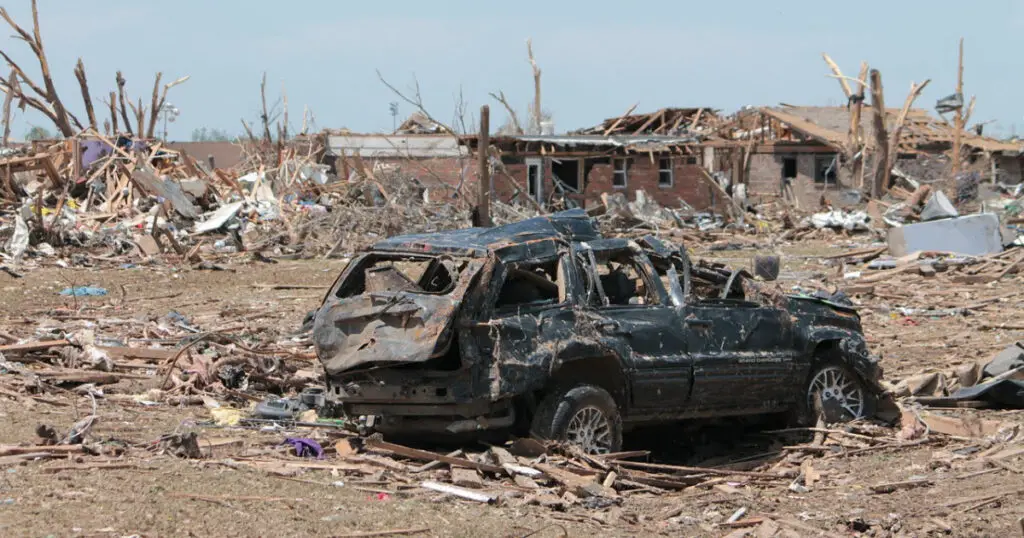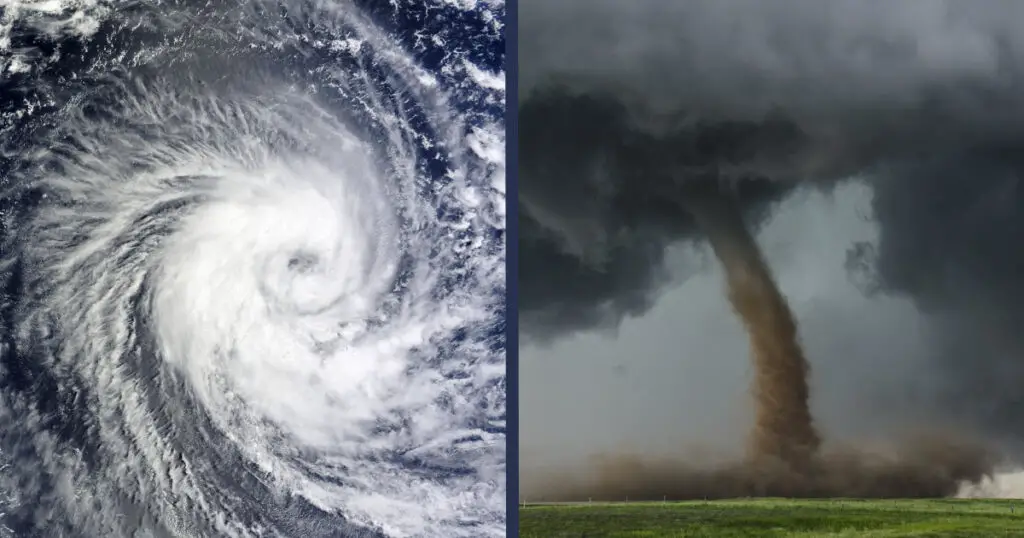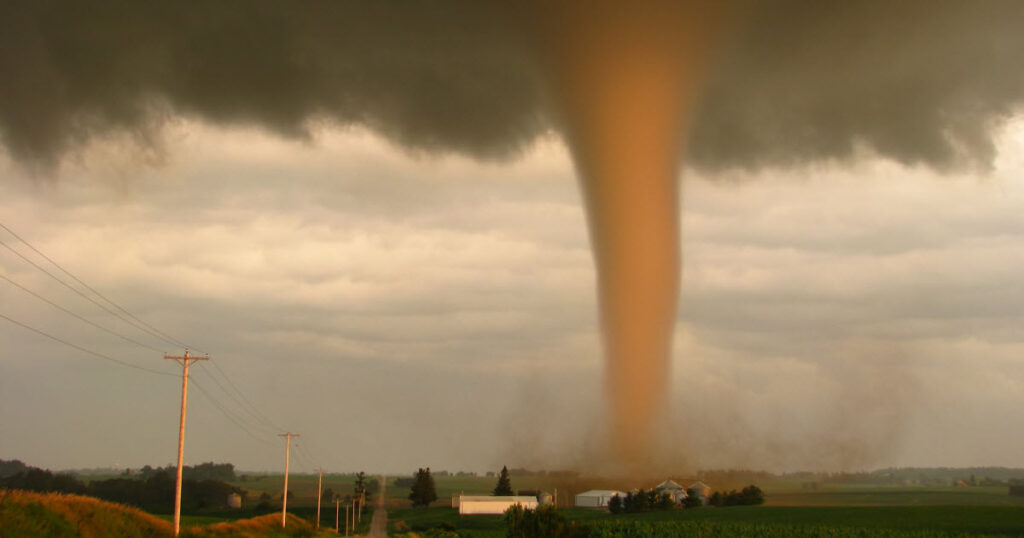Tornadoes are large columns of air that twist around on the ground, leaving with it a wake of destruction. Thanks to all of the movies (I’m looking at you, Helen Hunt) and because of media coverage we’re well aware of what a tornado is. Tornadoes are air funnels that rotate around as it travels on the ground. This column of air rapidly spins around, and this is where they get the name twisters. But how fast does a tornado move, and what do you need to know about finding cover if you’re in a tornado’s path?
Tornadoes move really quickly. In this article, we’ll explore some of the highest speeds ever recorded and how fast a tornado can move on a regular basis.
Tornadoes: A Brief Overview
The largest tornadoes can gain wind speeds of 250 miles an hour or more. However, most tornadoes dissipate quickly. They rage through the land, bringing a damage trail anywhere from one mile to 50 miles long. Oftentimes they can damage homes and buildings by ripping their roofs off, or flinging items like cars all around. They can uproot trees and poles and even flip trains, depending on their power.
In the United States over 1,000 tornadoes are recorded every year with most occurring in tornado alley. Deaths, injuries, and damages are always recorded. In April of 2020, a strong tornado through San Jacinto and Polk County, TX left 3 dead, 33 injured, and caused damage worth $5 million.
But first, let’s quickly explore how tornadoes form.
What Makes a Tornado?
During a thunderstorm, energy is released. Occurring mostly during the spring and summer in North America, tornadoes are born whenever the conditions are right.
Usually an extension of a thunderstorm, tornadoes form when there is a collision between warm winds and cold winds. The sequence that forms tornadoes is as follows:
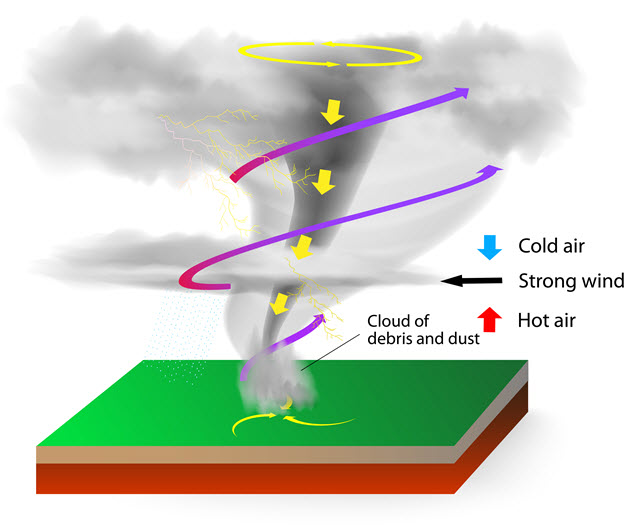
- Warm, humid air meets cold, dry air and creates a downdraft.
- Cold air sweeps under the warm air, while the warm air creates an updraft. This movement creates a supercell.
- At the same time, the winds coming from different directions and speeds also affects the column of cold and warm air colliding.
- These winds create wind shears, which force the storm to pile and rotate. The cold air produces a small cloud.
If the winds are powerful enough, the cloud forms a funnel and it extends towards the earth. Once it touches the ground, the rotating winds reach the final stage of forming a tornado. For the next few seconds to three hours, the tornado can move in any direction, causing destruction.
Movement and Strength of a Tornado
When a tornado occurs, it often creates a sound as loud as a freight train passing by. A tornado brings about winds with speeds that can be recorded up to 300mph. While it whirls about with the winds, it can move around on the ground, creating a path. This is generally the path of destruction that we are familiar with. It begins as soon as it hits the ground and ends when it dissipates.
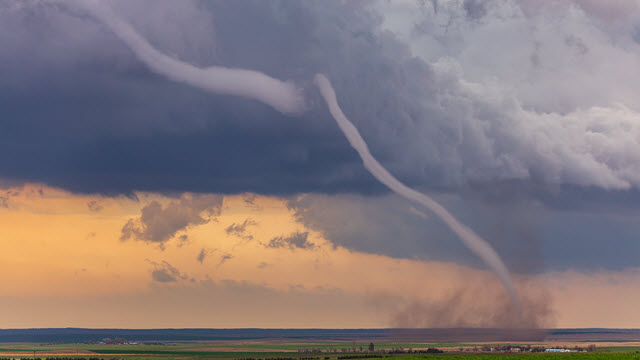
A tornado’s most common path is from southwest to northeast or west to east. However, tornadoes can move in any direction. This is because the wind’s constant flow keeps the tornado moving.
The tornado will be pushed towards the side where the stronger wind is pushing against the weaker wind. Tornadoes always have a weaker side, which the tornado will tilt towards. And while the winds can speed up to over 300mph, the tornado’s movement will differ.
According to researchers, a tornado’s forward speed, or the speed at which it moves on the ground differs from its wind speeds. Take the example of 2020’s Cookeville, TN Tornado. Its forward speed was recorded at 50mph. However, it had recorded wind speeds of up to 175mph.
| Related Posts |
|---|
Recorded Forward Speed of Tornadoes
- One of the earliest high forward speeds recorded for a major tornado was the Tri-State Tornado at 73 mph or 117kmph. This was recorded in 1925 in Missouri. This tornado killed over 695 people and injured 2,027.
- The 2013 Moore Tornado that devastated Moore, OK was rated as an EF-5, reaching a top wind speed of 210mph and a forward speed averaging at 9 mph, and topped at about 15mph. It killed 24 people and injured 212.
- The Joplin, MO tornado in May 2011 had a forward speed ranging between 20-25 mph.
- In 1974, Guin, AL’s tornado moved at a forward speed of 75mph, breaking the Tri-State Tornado’s 73 mph record.
- In 2016, Pilger, NE’s tornado was recorded to have had a forward speed of 28 mph. However, new methods of calculating data has surfaced recently by Pecos Hank that the fastest forward speed it reached was 94.6 mph.
- Cookeville, TN tornado that was rated at EF-4 recorded a forward speed of an average of 50mph, topping up at 65mph. It killed 25 people and injured 209.
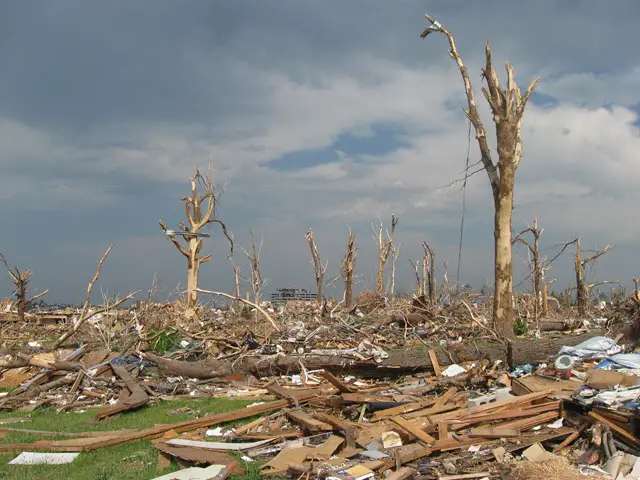
How Does a Tornado Stop?
A tornado’s source is the supercell or large thunderstorm. Remember the wind shear we talked about earlier? This gives the tornado power, through two types of shears:
- Directional
- Speed
When the air moves higher it changes direction and speed. So, when higher altitude winds move much faster and opposite the lower altitude winds, it increases the strength of the tornado. Depending on the humidity, the terrain, and the strength and size of the thunderstorm, the tornado eventually weakens when it reaches its peak. This can happen at any time.
Common knowledge about the weakening of tornadoes is believed to happen when the cold air undercuts the warm updraft. Since the flow is weakened, and the warm air is getting cooler, the strength of the air rotations dissipates. This causes the tornado to weaken and then die out.
What Should You Do When You See a Tornado?
Let’s look at three scenarios, now that you know what the destructive speeds of tornadoes can do.

- If you are indoors, in a building: Make sure you avoid windows. Go to the lowest floor of the building. Make sure you protect your head from falling debris. Try to cover yourself with some thick padding like a mattress or a blanket. Avoid going under furniture.
- If you are in a vehicle: If you see a tornado hurtling towards you, it is best for you to try to drive perpendicular to the direction of it. Look out for shelter as soon as you can. If you have to stay in the vehicle, make sure you have your seat belt on and keep your head protected by crouching low. That way, if the glass breaks it does not hurt you much. The key is to be able to reduce as much damage as possible.
- If you are on foot outdoors: Find shelter immediately. If you can’t, lay flat, face down on the ground, and put your arms over your head to protect it. Stay away from trees and cars as they can be thrown at you by the tornado if it is too fast.
Final Thoughts About Fast-Moving Tornadoes
Now you know how a tornado is formed and how fast it can move on the ground. It is also important for you to know how to protect yourself when facing a tornado storm. Tornadoes can become very strong, but their path is usually not too long. Many tornadoes dissipate very quickly. It is still important to know about it so that you can keep yourself safe.
